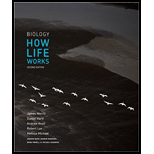
To determine:
The conclusions that can be drawn from the experiment (Rutherford) about the structure of an atom.
Introduction:
The experiment done by Ernest Rutherford in which the particle beam passes the piece of gold foil that is made up of only few atoms, this is because the positive charged particles passes the spaces between the atoms in the foil.
Explanation of Solution
The group of atoms combines to form the elements. The elements consist of as many atoms as possible which are packed and have a space between them. The atoms are the smallest unit that is made up of protons, neutrons and electrons. These many atoms combine to form molecules and then the molecules combine to form elements. A piece of foil is also made up of atoms which are packed and have some space between them.
In this experiment, a beam of positively charged particles is passed through the gold foil in which only few particles are deflected and maximum particles passes through the foil. There is no change in the path of the passing beam particles is seen.
The two conclusions that are observed in this experiment:
- 1. The atoms present in the foil must have enough space that the positively charged particles can easily pass through the foil. The particles that pass between the spaces of atoms does not get influenced or repelled by the positive charges present in the atoms of the foil.
- 2. Another conclusion is that the size of positively charged protons present in the atoms is so small and compact that they are not able to make contact with the coming positively charged particles.
The beam particles pass through the spaces present between the atoms. As they are positively charged, they are not hindered by the protons of atoms.
Want to see more full solutions like this?
Chapter 2 Solutions
Biology: How Life Works - Standalone book
 Human Anatomy & Physiology (11th Edition)BiologyISBN:9780134580999Author:Elaine N. Marieb, Katja N. HoehnPublisher:PEARSON
Human Anatomy & Physiology (11th Edition)BiologyISBN:9780134580999Author:Elaine N. Marieb, Katja N. HoehnPublisher:PEARSON Biology 2eBiologyISBN:9781947172517Author:Matthew Douglas, Jung Choi, Mary Ann ClarkPublisher:OpenStax
Biology 2eBiologyISBN:9781947172517Author:Matthew Douglas, Jung Choi, Mary Ann ClarkPublisher:OpenStax Anatomy & PhysiologyBiologyISBN:9781259398629Author:McKinley, Michael P., O'loughlin, Valerie Dean, Bidle, Theresa StouterPublisher:Mcgraw Hill Education,
Anatomy & PhysiologyBiologyISBN:9781259398629Author:McKinley, Michael P., O'loughlin, Valerie Dean, Bidle, Theresa StouterPublisher:Mcgraw Hill Education, Molecular Biology of the Cell (Sixth Edition)BiologyISBN:9780815344322Author:Bruce Alberts, Alexander D. Johnson, Julian Lewis, David Morgan, Martin Raff, Keith Roberts, Peter WalterPublisher:W. W. Norton & Company
Molecular Biology of the Cell (Sixth Edition)BiologyISBN:9780815344322Author:Bruce Alberts, Alexander D. Johnson, Julian Lewis, David Morgan, Martin Raff, Keith Roberts, Peter WalterPublisher:W. W. Norton & Company Laboratory Manual For Human Anatomy & PhysiologyBiologyISBN:9781260159363Author:Martin, Terry R., Prentice-craver, CynthiaPublisher:McGraw-Hill Publishing Co.
Laboratory Manual For Human Anatomy & PhysiologyBiologyISBN:9781260159363Author:Martin, Terry R., Prentice-craver, CynthiaPublisher:McGraw-Hill Publishing Co. Inquiry Into Life (16th Edition)BiologyISBN:9781260231700Author:Sylvia S. Mader, Michael WindelspechtPublisher:McGraw Hill Education
Inquiry Into Life (16th Edition)BiologyISBN:9781260231700Author:Sylvia S. Mader, Michael WindelspechtPublisher:McGraw Hill Education





